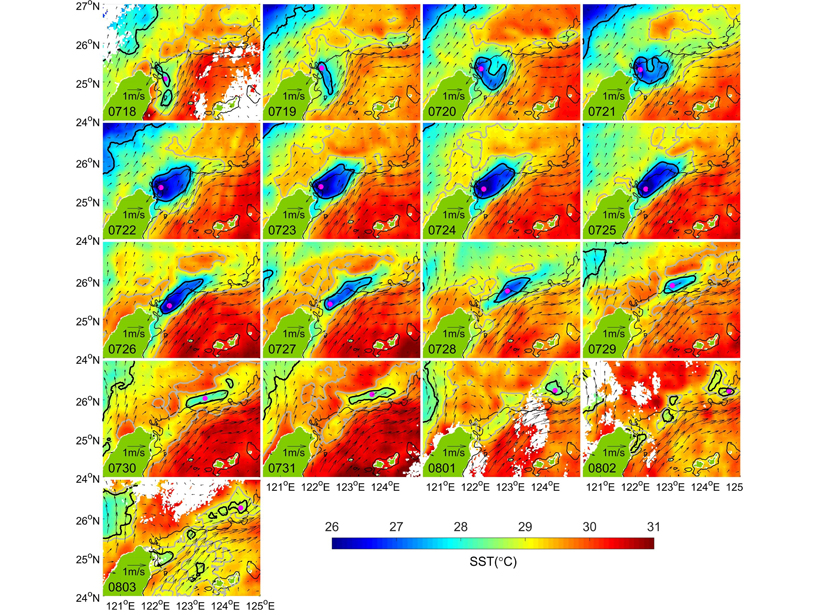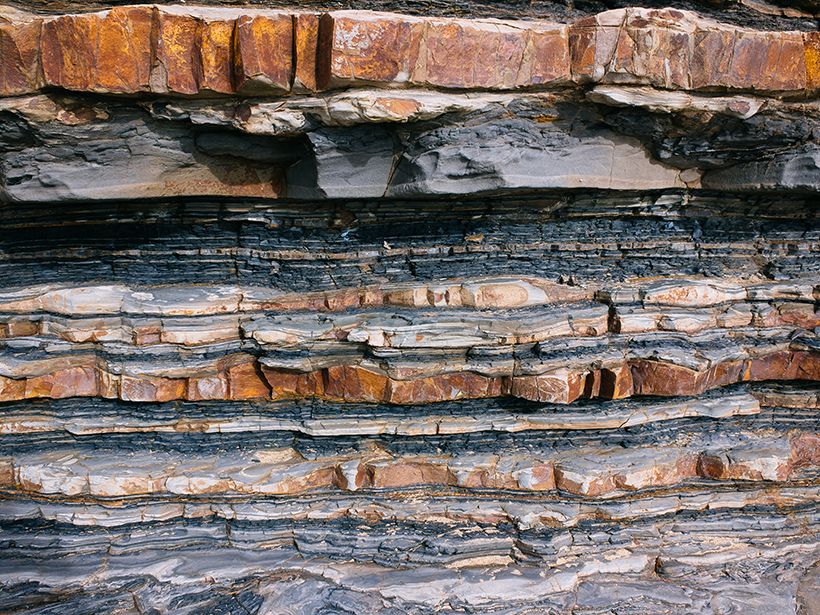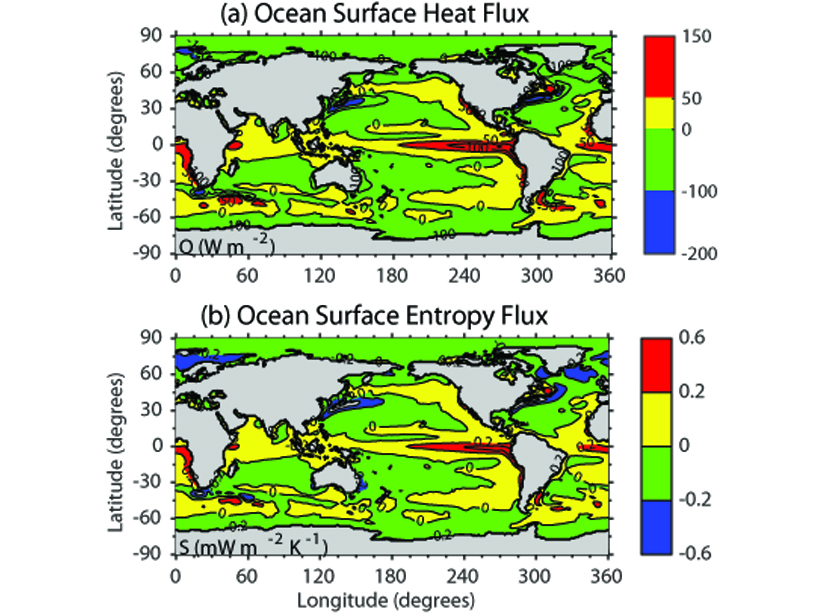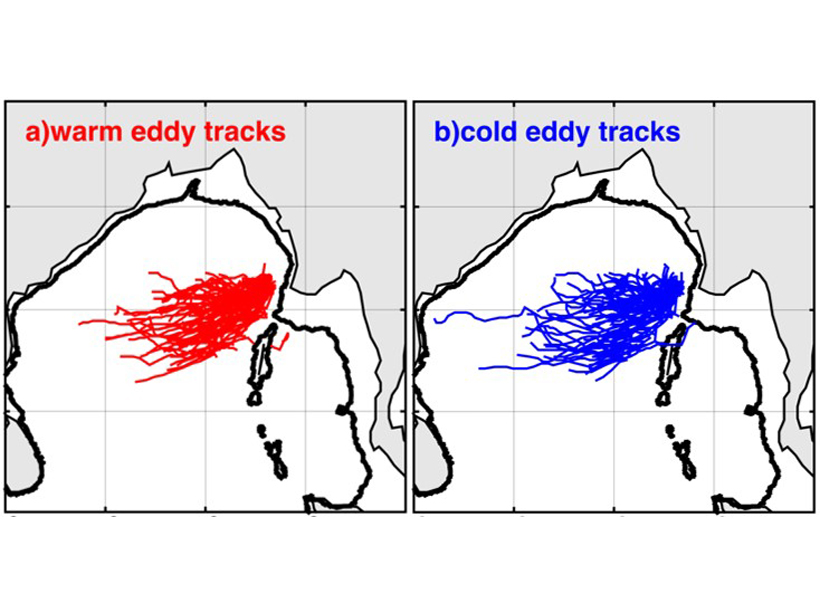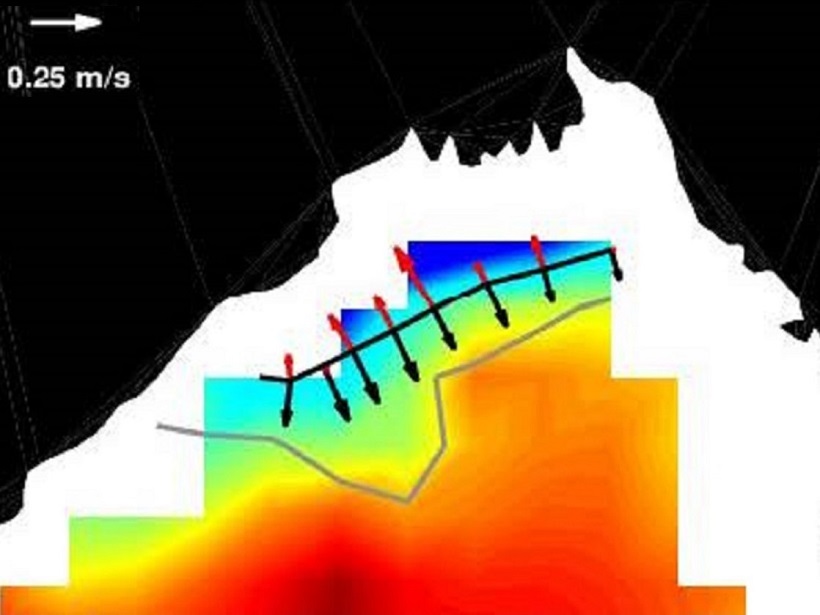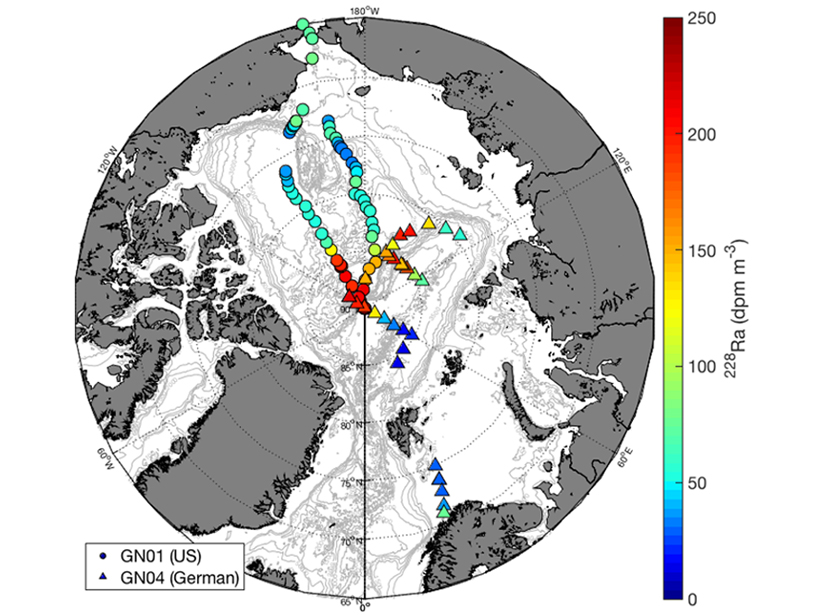A simple algorithm obtains short-term variations in upwelling, which show that the subsurface Kuroshio waters can upwell directly into the East China Sea shelf under the advection of the Kuroshio.
Journal of Geophysical Research: Oceans
Eddies Influence Productivity in the Subtropical Open Ocean
Ocean eddies may help recycle nutrients within giant current systems that encircle “desert” surface waters.
How Do Turbidity Currents Accelerate?
Flume experiments show that a self-reinforcing cycle can strengthen the currents responsible for transporting large amounts of sediment to the deep oceans.
A Comprehensive Estimate on the Entropy Budget in the Ocean
An analysis of the energy budget in the ocean estimates the Carnot work to be 110 terawatts and the ocean’s Carnot efficiency to be 0.86%.
New Definition of Potential Spicity by the Least Square Method
A thermodynamic function of the potential spicity is defined and it is orthogonal to the potential density in the least square sense.
Eddy Generation in the Central Bay of Bengal
Eddies in the central Bay of Bengal are generated near the eastern boundary of the basin, related to equatorial wind forcing, nonlinearity, and the topographic “bump” of Myanmar.
Observing Winter Mixing and Spring Bloom in the Mediterranean
A new special issue of JGR: Oceans and JGR: Atmospheres presents new insights into the dynamics of dense water formation in the western Mediterranean Sea and its biogeochemical consequences.
Dispersal of River Water by Ocean Eddies and Shallow Ekman Flow
Low-salinity water from the Ganga-Brahmaputra river is transported by mesoscale eddies in the Bay of Bengal, but when the monsoon winds strengthen, a shallow “Ekman” flow dominates dispersal of water.
Increased Release Rates of Radium Isotopes on Arctic Shelves
A longer ice-free season on Arctic shelves causes an increase in sediment-water interaction.
Why Trace Metals Cling to the Ocean’s Skin
Metals within the millimeter-thick sea surface microlayer may impact ocean health and climate.

